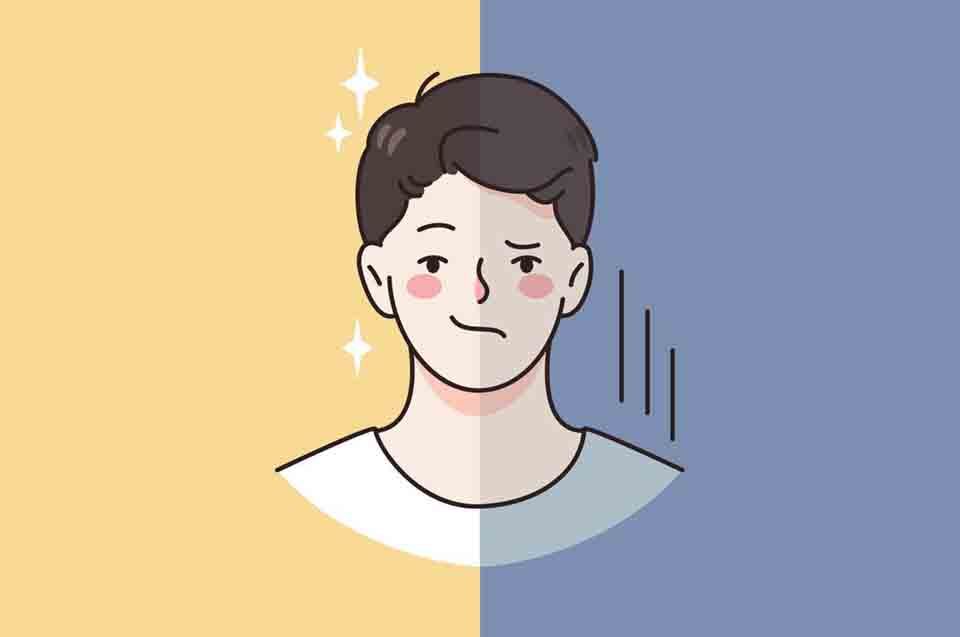Human beings are prone to, and someone would say suffer from, feelings – we call these ‘emotions’. They affect our behaviour in different ways: some positive some negative. Some people appear, to others, to be driven by these factors. We call them emotional. Emotion could be defined as a strong feeling caused by:
• Circumstances;
• Feelings; or
• Interactions with others;
• Physiological things (such as drink or drugs – ‘highs’ and ‘lows’ engendered by these – although they may just be an exacerbating factor); and we talk about people trying to ‘control their emotions’ or as ‘not being in control’ of their emotions.
A whole industry, for example, has grown up around anger management – anger being considered as a strong emotion. They can completely take over our lives and can lead elsewhere – e.g. intense sadness can lead to depression and in some cases suicide or other ‘deviant’ behaviour.
Emotions are different from rational reason and knowledge and if you asked people what an emotion is they would probably say off the top of their heads: happiness, sadness, anger. Then, perhaps, they would stop and think for a short while and maybe add in fear, possibly hatred and perhaps love. Usually, of course, they have not considered what a basic emotion actually is: but they have experienced them.
What is an emotion?
Emotions are abstract and thus in fact difficult to define precisely: and not all languages share the exact parallel in words that they use to describe them. There is no direct translation of the German word ‘schadenfreude’, which is considered to describe an emotion in German speaking areas, into English and a phrase or sentence is used instead.
A basic emotion can be described as:
• ‘a conscious change in a human’s behavioural and psychological state of being in response to some type of stimulus’
and this ‘stimulus’ could be either:
• external (such as something happening to a person; or an interaction with someone or something); or
• internal (such as a thought or physical sensation); or
• a combination.
Basic emotions can also be defined as a combination of three elements:
• a unique experience;
• a physiological response (e.g. tears, laughter, shaking); and
• a behavioural reaction – perhaps ‘fight or flight’.
How are basic emotions ‘analysed’ and identified?
Researchers usually adopt one of two separate approaches for analysis:
a] the hypothesis that emotions are discrete and stand-alone concepts which can be defined separately or individually;
and
b] that emotions are aspects of a gradual dimension, or a combination of two or more dimensions, and nuanced on a step-by-step basis along those dimensions.
In discrete emotion theory, humans are thought to have a fundamental set of basic emotions that are cross culturally recognisable; whereas in the dimensional approach, basic emotions are not able to be easily identified and vary by culture, experience etc.
Why analyse them?
It is a topic which psychologists and others have spent some time thinking about, studying, analysing and drawing conclusions. Unsurprisingly, given its abstract nature, there is little agreement on just how many basic emotions there are but, it is felt, however, to be an important area of study because, as they frequently drive our behaviours, understanding them could help people control their emotions better or perhaps exploit them more efficiently.
Wilhelm Max Wundt, considered by some as being the father of modern psychology, believed that emotions were unconscious steps in decision-making affected by experience and culture. He stated in 1897 that emotions could be described along three polarised dimensions:
• pleasurable versus unpleasurable (and incidentally supporting the Stoic versus Epicurean philosophical split);
• arousing Versus subduing; and
• strain Versus relaxation.
In similar vein Harold Schlosberg in the 1950’s opted for a slight variation on this:
• pleasantness v unpleasantness;
• attention v rejection; and
• level of activation.
In Eastern philosophy, for example, much emphasis is put on managing or mastering emotions as part of ‘the way’ to different goals.
How many are there?
There have been several attempts at defining how many there are and they vary tremendously in number from four then to six (the most frequent number), and up to 32+.
William James in 1890 claimed that there were only four basic emotions: Fear, Grief, Love and Rage. Rene Descartes, the French philosopher, in a paper called ‘The Passion of the Soul’ thought that there were 6 of what he called ‘passions’: Wonder, Love, Hate, Desire, Joy, and Sadness).
An American psychologist Paul Eckman initially identified six candidates for the basic emotions in the 70s. He analysed many different people, across many locations, and suggested that the six basic emotions he identified could be found in humans across all current cultures. The basic emotions he identified were:
• happiness;
• sadness;
• disgust;
• fear;
• awe; and
• anger.
This has gained general support among many psychologists although some criticism revolves around the omission of ‘Lust/Arousal’ – Desire as Descartes would have described it – which is considered by many to be a very strong and indeed a very basic emotion. It is generally considered to have the most accurate discrete definitions of basic emotions.
Carroll Izard opted for 10 – Fear, Anger, Shame, Contempt, Disgust, Guilt, Distress, Surprise, Joy and Interest. He stated that these ten fundamental emotions cannot be reduced to more basic emotions: but could be combined to produce other emotions – in the same way that the three primary colours (red, yellow and blue) combine to produce all the other colours or shades (except black – all colour absorbed; and white – all colour reflected). His work has been built on by others, and paradoxically criticised by others as containing some emotions that are not (in the critic’s opinion) a basic emotion.
The Wheel of Emotion
Robert Plotnik, another psychologist, took a different approach, when analysing the nuances between the basic emotions he identified; and then developed, a wheel of emotions with eight major categories (spokes) with various other emotions in between these eight categories. His eight were:
• optimism;
• love;
• submission;
• awe;
• disapproval;
• remorse;
• contempt; and
• aggression.
He then extended this basic emotion set by adding in those which fell as a combination of two of the main spokes; in three layers; with the emotions getting stronger as they approached the centre, reflecting the increasing intensity of emotions. In this way, he came up with 32 but there is much dispute as to which are in fact basic emotions and which are not.
As an example, between Optimism and Love, he identified:
• first of all Serenity;
• second Joy, and
• third Ecstasy, as the most intense.
Between Contempt and Aggression he identified:
• firstly Annoyance;
• secondly Anger; and
• finally Rage as the most intense in that ‘spoke’.
He also postulated that this would work in reverse, in as much as ‘Joy’ and ‘Trust’ could be combined to create ‘Love’; as would ‘Serenity’ and ‘Acceptance’. Thus, the basic emotions can combine into more complex emotions. In this model there are therefore 24 basic emotions and 8 which are more complex. He is using an alternative set of semantics here by suggesting more basic emotions exist than complex emotions. Not everyone agrees with this, but it does serve as usual tool for emotional analysis.
Industry trends
The general trend across history is that each new study has tended to increase the number of emotions and in 1996 Richard and Bernice Lazarus postulated 15 basic emotions in their book Passion and reason. Next, for example, one study which attempted to quantify basic emotions based on facial expressions came out with 21 basic emotions. This conclusion, however, was criticised because facial expressions are not universal in all cultures, are not standard, and can have other meanings.
In yet another study, from the US National Academy of Science in 2017, the range of emotions was expanded to 27. In this study they found, or postulated, that people experienced emotions on a gradient or sliding scale.
This oddly supports much of the work by Plotnik but using a different model and a different visual representation. Another approach for basic emotion analysis, not quite tested fully, is to view emotions on a two-dimensional grid, looking at the degrees of positive and negative and the combination between axis yielding different basic emotions.
Strong Versus weak emotions
Whilst it is generally agreed that not all basic emotions share the same level of intensity there is, however, little consensus as to which are the stronger of the basic emotions, some support Love, others Anger, and some Fear etc.
How do basic emotions ‘work?
The brain stores memories from our previous experiences and uses these memories to determine how to feel and respond to an experience. In addition, it is believed by some, that we inherit what we might call ‘ancestral experiences’ which affect the way the brain processes stimuli. Then it releases of certain ‘messages’ to the brain and body (which are called ‘neurotransmitters’ and ‘hormones’) the release of which is based on how it interprets the stimuli.
So: if a stimulus is conceived or recognised as exciting or enjoyable (i.e. positive) it will release such items as dopamine, serotonin, or endorphins and they influence how the body reacts (the physiological aspect). Those who are ‘gym-bunnies’ or ‘runners’ often experience a kind of euphoria or physical ‘high’ after exercising: due to the release of these messages.
If, however, the stimulus is perceived as generating fear, shame or disgust, or anger (i.e. negative) then it releases a different set of messages such as epinephrine, norepinephrine, adrenaline and cortisol. These are largely responsible for the ‘fight-or-flight’ response – a primitive development from aeons ago, possibly reptilian, designed for our safety. All have experienced the drain after the loss of the adrenaline which has stimulated action. When a parent sees a child doing something which might harm them – they often respond with anger – due to their fear for the child and how the body processes that stimulus often with adrenaline.
Thus, emotions are experienced in the body as the result of how the brain processes an event and the stimuli it generates, and then which messages (neurotransmitters and hormones) are released into the body in response to the interpretation: and it will vary by circumstances and experience. New parents for example, with no experience of parenting, will usually be quite concerned as to what their children are doing; but as the children get older and, especially if they have more than one, they become more relaxed as their experience tells them different things and thus, they are more likely to respond in a calmer manner.
How are they expressed?
It is generally agreed that basic emotions can be expressed in several ways:
• Facial expression: he looks angry, she is smiling;
• Body language: an aggressive stance, a submissive posture;
• Tone of voice: shouting, meekness;
• Actual words used: swearing, saying sorry;
• Physiological reaction: running, leaping aside, punching or kicking out, smashing a telephone down in rage.
Or, of course a combination of some or all of the above.
Examples of how some basic emotions manifest themselves could be:
Happiness
• Facial expressions: such as smiling
• Body language: such as a relaxed stance
• Tone of voice: a pleasant way of speaking
Sadness
• Crying
• Feeling ‘down’ or depressed
• Lethargy
• Quietness
• Withdrawal from others
Fear
• Facial expressions: such as widening the eyes;
• Body language: attempts to hide or flee from the threat
• Physiological reactions: such as rapid breathing and heartbeat
Disgust
Disgust can be of two types – physical and moral.
If Disgust is accepted as a basic emotion (not a universal truth) then for physical:
• Body language: turning or moving away;
• Physical reactions: such as vomiting;
• Facial expressions: such as wrinkling the nose and curling the upper lip
Disgust can be triggered by several items including unpleasant tastes, sight, or smell.
It is believed by some that this is a survival instinct to ensure things which are harmful or fatal are not ingested. Disgust can also be generated by other stimuli such as Body Odour (BO), bad breath, infected wounds. Some believe that this may be a way of avoiding diseases.
Moral disgust may be experienced when unacceptable behaviours are observed – however this is often deeply cultural and circumstantial. Many feel moral disgust at themselves and others in post-situational reflection – e.g. after slaughter on the battlefield, or having taken part in genocide and/or mass rape.
Some issues with the analysis
Some critics of the analysis have raised concerns in three areas:
Culture
Not all cultures are the same and different things have different meanings in different cultures. Today the Spartan culture of intense cruelty to boys as they trained to be warriors is considered barbaric; and the intense brain-washing of communist and other totalitarian regimes leads to different perceptions – e.g. in Militaristic Japan up to and during the Second World War – suicide was considered noble; as it is some aspects of Islam – whilst it is abhorred in many other cultures
Language
Languages use different grammatical constructs and words and have many different aspects and there is not always a direct comparison or translation from one to another. In some languages the word for anger and sadness is the same – whereas most ‘western’ cultures and languages see these as separate and holly discrete.
Environment
Where you are situate and brought up also affects perceptions. For example:
• desert versus temperate versus Arctic
• country versus urban
• small families versus large families versus communal upbringing (Kibbutzes)
• religion
• and so on.
And this may affect how emotions are felt and perceived, and no doubt each influences the others to produce how individuals understand what basic emotions are and how they process them.
In addition, some feel that some emotions which could be described as basic – such as lust and hate are very rarely considered.
Conclusion
There is no absolutely definitive agreement as to how many basic emotions there are. There are many variations in the numbers and their definition depends in turn on the inputs and/or dimensions chosen for analysis. A simplified list, however, could be said to be, Anger, Fear, Love, Happiness, Disgust, Surprise and Lust (which is clearly not a part of Love) as well as Hate. The rest can be described as variations on these basic emotions. Emotions are, however, subjective and expressed and felt in a way unique to each individual depending on his or her circumstances and experience and, in addition, this is an area which is continually being studied and no doubt other definitions will emerge in time.






